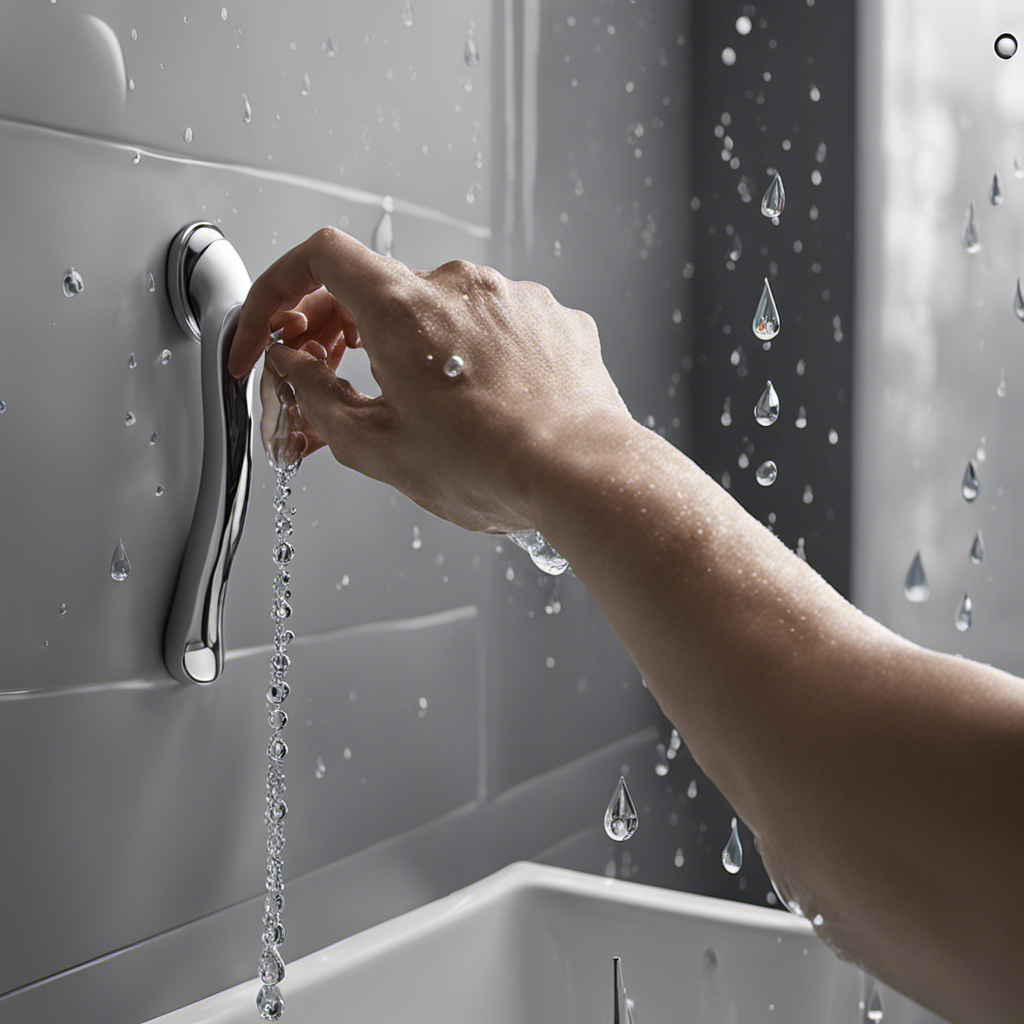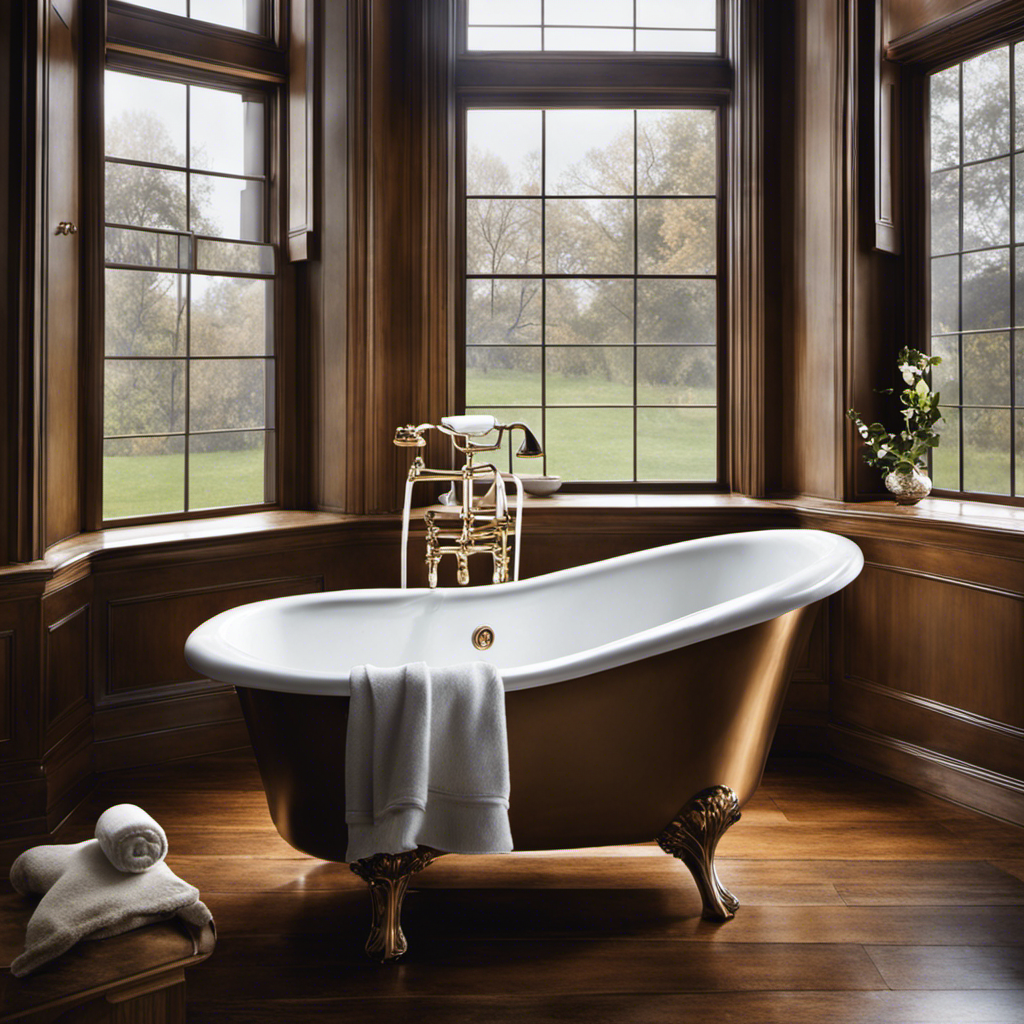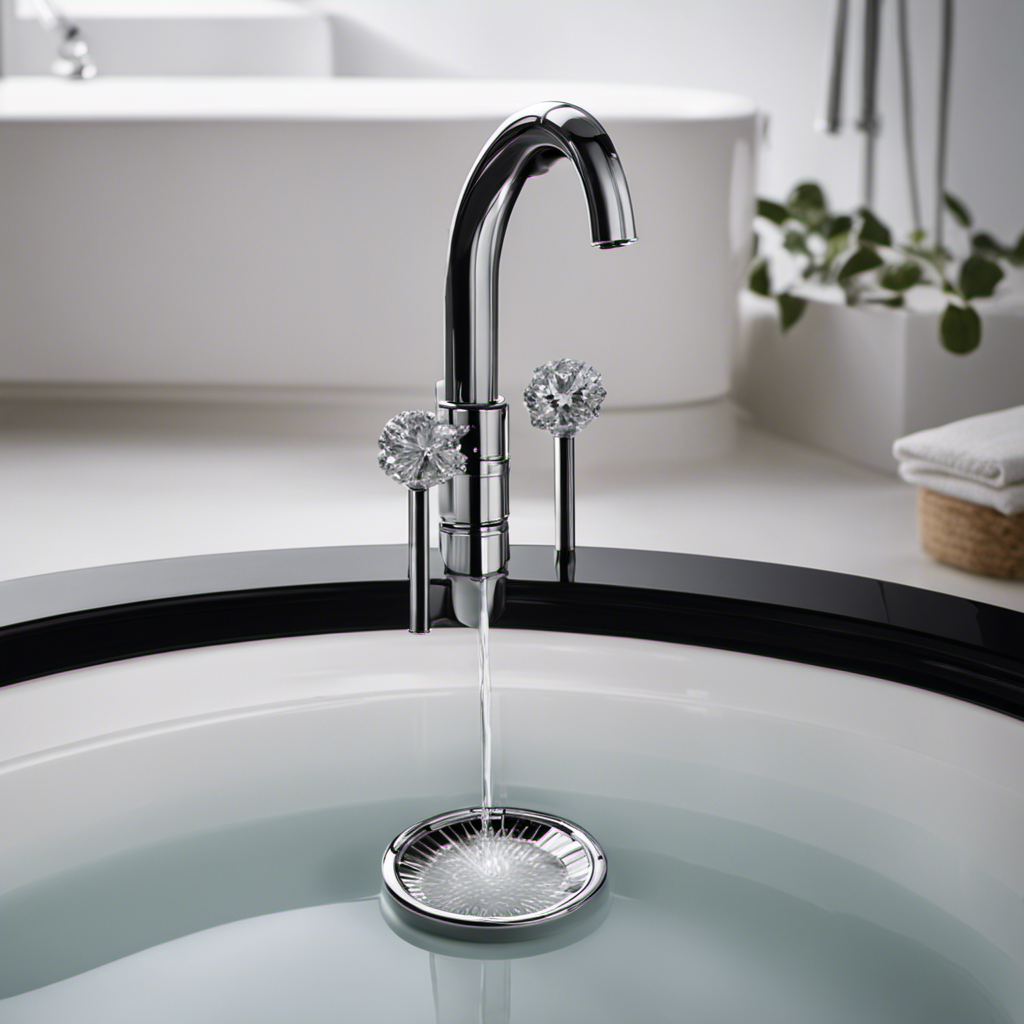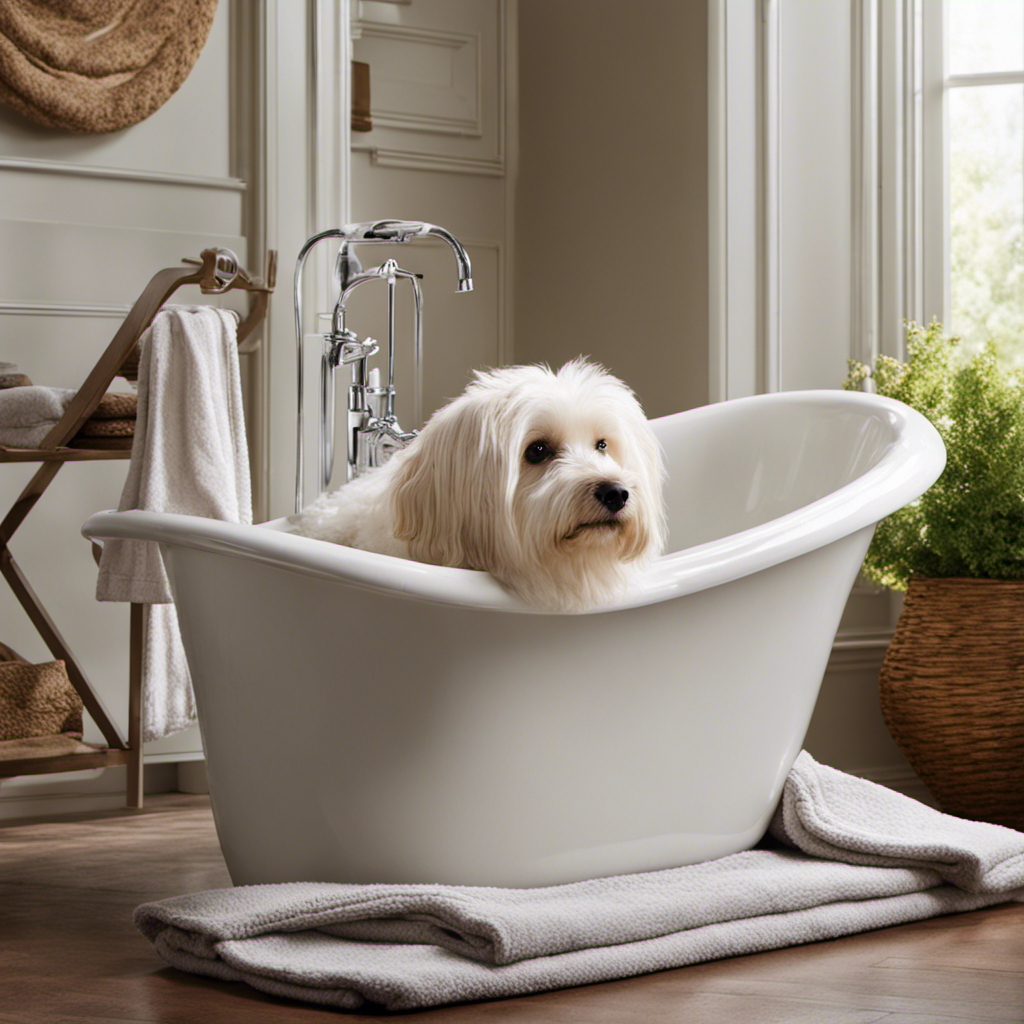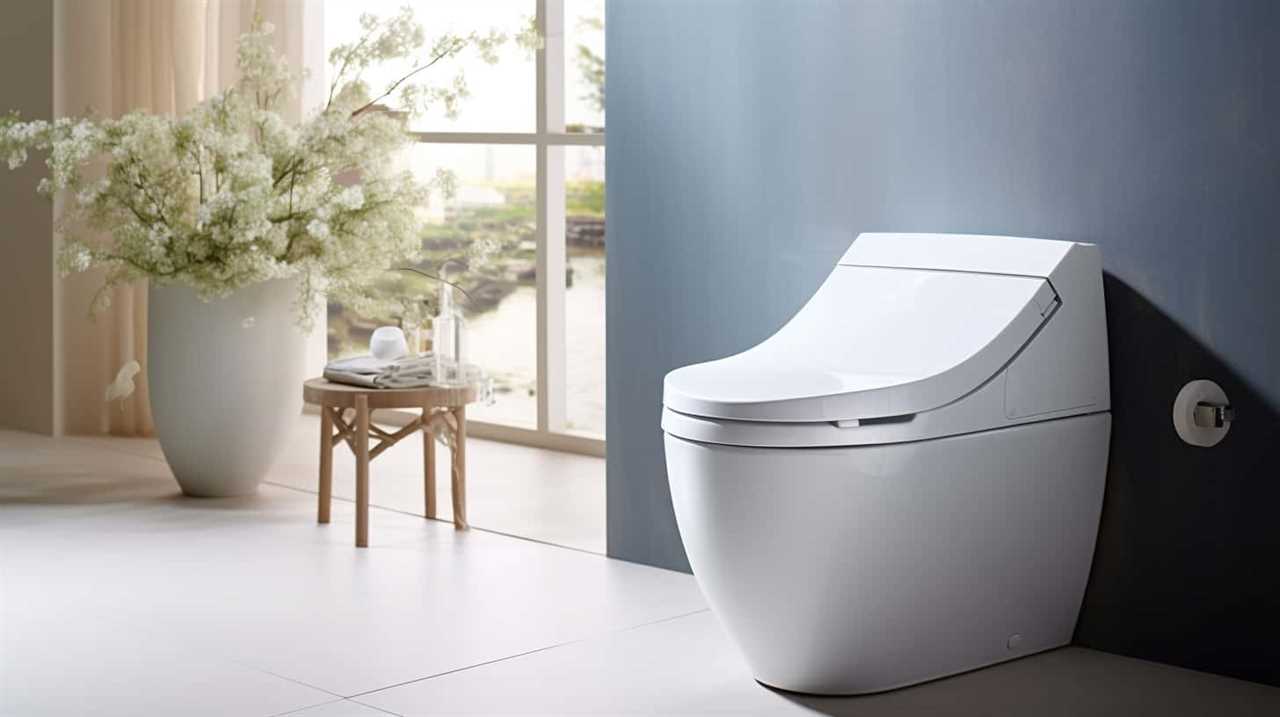Slippery, wet, and worrisome – the bathtub can be a treacherous trap. But fear not! In this article, I’ll share practical techniques and safety measures on how to easily escape this aquatic abyss.
From utilizing assistive devices to incorporating exercises, we’ll explore a range of solutions to improve your mobility and make your bathtub exit a breeze.
So let’s dive in and discover the secrets to a safe and stress-free departure from the tub!
Key Takeaways
- Safety measures such as non-slip mats or adhesive strips, grab bars, proper lighting, and taking your time are important for preventing accidents when getting out of the bathtub.
- Techniques like using a bathtub transfer bench, considering a bathtub lift, using alternative bathing methods, and providing solutions for fear and anxiety can make bathtub exit easier for individuals with limited mobility.
- Utilizing assistive devices such as grab bars, vertical and horizontal bars, bath transfer benches, and adaptive equipment with ergonomic design can enhance mobility and provide stability and support during bathtub exit.
- Incorporating exercises to improve strength and flexibility, including dynamic and static stretches, muscle strengthening exercises, and gradually increasing exercise intensity, can help individuals improve their ability to get out of the bathtub safely.
Understanding the Importance of Safety Measures
You need to understand the importance of safety measures when getting out of the bathtub. Promoting awareness and preventing accidents should be our top priorities.
One of the most crucial safety measures is having a non-slip mat or adhesive strips in the bathtub. This reduces the risk of slipping and falling when stepping out.
Additionally, installing grab bars on the walls near the bathtub is essential. These bars provide support and stability, especially for individuals with limited mobility.
Another important safety measure is ensuring proper lighting in the bathroom. Well-lit spaces make it easier to see potential hazards and avoid accidents.
Lastly, it’s crucial to take your time when getting out of the bathtub. Rushing or trying to do it too quickly can increase the chances of slips and falls.
Exploring Different Techniques for Easy Bathtub Exit
Once you’re finished soaking, it’s important to find the most convenient and efficient technique for easily exiting the bathtub.
For those who have difficulty with traditional methods, alternative bathing methods can provide a solution. One such method is using a bathtub transfer bench. This bench allows you to sit on one side of the tub and slide across to the other side, eliminating the need to lift your legs over the edge.
Another option is a bathtub lift, which mechanically raises and lowers you into the tub, eliminating the need for stepping in or out.
These alternative methods are especially beneficial for individuals with limited mobility or who experience fear and anxiety in the bathtub.
Utilizing Assistive Devices for Enhanced Mobility
When using assistive devices, I can enhance my mobility and safely navigate in and around the bathtub. Adaptive equipment with ergonomic design plays a crucial role in making this possible. Here are some key points to consider:
-
Grab Bars: These sturdy bars mounted on the walls provide stability and support while getting in and out of the bathtub.
-
Vertical bars: Installed near the bathtub entrance to assist with balance and stability while stepping in or out.
-
Horizontal bars: Positioned along the bathtub wall to aid in maneuvering and transferring from a seated to standing position.
-
Bath Transfer Bench: This seat extends across the bathtub, allowing for easy transfer from outside to inside. With non-slip feet and a backrest for added comfort, it provides a secure and stable platform.
Incorporating Exercises to Improve Strength and Flexibility
To improve your strength and flexibility, it’s important to incorporate regular exercises into your routine. Stretching routines and muscle strengthening exercises are key components to achieving these goals.
When it comes to stretching, it’s essential to focus on both dynamic and static stretches. Dynamic stretches involve moving parts of your body to increase range of motion and warm up the muscles. Examples include arm circles and leg swings.
On the other hand, static stretches involve holding a position for a certain amount of time to lengthen the muscles. This can include stretches like hamstring stretches and calf stretches.
Muscle strengthening exercises, such as squats and lunges, help to build strength and stability in your lower body. Incorporating exercises like push-ups and planks can also help to strengthen your upper body and core.
Remember to start slowly and gradually increase the intensity of your exercises to avoid injury.
Implementing Bathroom Modifications for Accessibility
It’s important to make bathroom modifications for accessibility to ensure that individuals with mobility challenges can use the facilities safely and comfortably. When evaluating financial assistance options for bathroom modifications, there are a few key factors to consider. Here are some important points to keep in mind:
-
Government programs: Research government programs that provide financial assistance for home modifications. These programs often have specific criteria and application processes, so be sure to gather all necessary information before applying.
-
Non-profit organizations: Look into non-profit organizations that offer grants or low-interest loans for accessibility modifications. These organizations may have different requirements and application processes, so it’s important to do thorough research.
Addressing potential barriers to bathroom accessibility in older homes may require additional considerations:
-
Structural modifications: Determine if the bathroom’s layout needs to be modified to accommodate accessibility features such as grab bars, widened doorways, or a roll-in shower.
-
Plumbing and electrical updates: Older homes may require updates to plumbing and electrical systems to support modifications like a walk-in bathtub or a raised toilet seat.
Frequently Asked Questions
What Are Some Common Safety Measures to Keep in Mind While Getting Out of the Bathtub?
When getting out of the bathtub, it’s important to consider safety measures. Accessibility in bathroom design is crucial, as well as installing grab bars to provide support and prevent slips and falls.
How Can I Make My Bathtub Exit Easier Without Using Any Special Techniques?
To make my bathtub exit easier without special techniques, I can use some simple tips. These include installing grab bars, using a non-slip mat, and taking small steps to avoid slipping.
Are There Any Assistive Devices Available That Can Help Me Improve My Mobility in the Bathroom?
Yes, there are assistive devices and bathroom modifications available to improve mobility in the bathroom. They can include grab bars, shower chairs, raised toilet seats, and transfer benches, making daily routines easier and safer.
What Are Some Exercises I Can Incorporate Into My Routine to Make It Easier to Get Out of the Bathtub?
Exercises and safety measures can greatly improve the ease of getting out of the bathtub. Incorporating strength training, balance exercises, and using grab bars or a bathtub transfer bench can enhance mobility and reduce the risk of falls.
What Are Some Modifications I Can Make to My Bathroom to Increase Accessibility and Make It Easier to Get Out of the Bathtub?
To increase bathtub accessibility and make it easier to get out, bathroom modifications are essential. Installing grab bars, a bathtub transfer bench, and a handheld showerhead can greatly enhance safety and convenience.
Conclusion
In conclusion, getting out of the bathtub can be a challenge for some individuals, but with the right techniques and assistive devices, it can become much easier.
By implementing safety measures, such as bathroom modifications and exercises to improve strength and flexibility, individuals can enhance their mobility and reduce the risk of accidents.
Remember, just like a swimmer needs a ladder to safely exit the pool, we too can find tools and methods to ensure a safe and seamless exit from the bathtub.
So, don’t let the fear of getting stuck deter you from enjoying a relaxing bath. Take the necessary steps to make your bathroom accessible and regain your independence.
